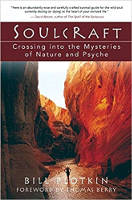
Image by Gerd Altmann and by Reimund Bertrams
Why do we project our repressed parts? Why can't or don't those parts just remain peacefully buried -- or asleep in the basement -- and let us go on undisturbed with our "normal" lives? One possibility is that projection increases the psychological distance between ourselves and the projected qualities, thereby defending ourselves from the possibility that we possess those qualities.
But there is another possibility. As the mythologies of all time -- and the depth psychologists of the twentieth century -- have been telling us, there is this irrepressible urge within each of us toward wholeness. Some would say this is why we have incarnated, to become more fully who we are in our deepest essence. The long black bag we drag behind us is an all-inclusive, custom-made storehouse of everything we need in our quest to become whole.
The soul is not going to be happy if we try to sleep away our lives, although we may succeed at it nonetheless. The soul can't make us wake up, but it can and does see to it that we project. That way we are likely to run smack into the wall of our own unlived potential. If we can recognize our projections, then we can embrace the painful opportunity to both heal and whole ourselves.
So we project. Apparently there is no way to avoid it even while there are limitless ways to ignore or deny it.
Our Projections Help Us See Our Hidden Aspects
Robert Bly agrees that projection is a fortunate thing indeed. Without it, he notes, we might never have the opportunity to own back those hidden, not-yet-embodied parts. Thank god, then, for the screens upon which we project: our friends, family, the famous, the infamous, foreigners, infidels, and the forms and forces of nature. Without those screens, our projections would simply sail into outer space like errant radio waves, and we would never get to see our hidden aspects.
There are actually two ways in which we project onto others. The first is when we project our own unrecognized personal qualities. The second is when we project the qualities of someone from our past onto people in our present.
Psychologists refer to the latter as transference -- unfinished emotional business from our past is transferred onto our current relationships. Most commonly what is unfinished is our relationships with our parents (or other childhood caregivers).
Revisiting the Central, Often Traumatic, Relationships of Our Past
Our souls want us to revisit those central, often traumatic, and incomplete relationships so that we can heal and learn. The soul does this by arranging for us to experience people from our current life -- our lovers, friends, friends' spouses, colleagues, bosses, teachers, psychotherapists, gurus -- as if they were the same sort of people as those major players from our childhood. That way we can find ourselves forming current relationships that resemble those from our past.
Consciously, we don't want that. But our souls recognize an opportunity. If we can re-create the same kinds of relationship problems we were unable to solve in childhood, we have another chance to get it right, to act and relate in ways that don't limit us.
Transference gives us the opportunity to discover how we have unwittingly created many of the dysfunctional qualities of our relationships (both old and new) in our attempts to protect ourselves from abandonment or emotional annihilation as children. Now, in adulthood, we have the opportunity to remove those barriers to self-expression and individuation and heal the wounds exposed when we do. But we aren't likely to do that work until we can see those barriers. How are we going to see them? Through the transference of old feelings onto current relationships.
The Five Stages of Projection: Re-Owning Our Abandoned Self
 The Jungian analyst James Hollis summarizes five stages in projecting and re-owning the abandoned parts of ourselves.
The Jungian analyst James Hollis summarizes five stages in projecting and re-owning the abandoned parts of ourselves.
In the first stage, we are convinced that what we are unconsciously projecting is true of the other. When we fall in love, for example, we are certain the other (about whom we almost never really know anything) is the most extraordinary being on the face of the planet. We are projecting the desirable and desired qualities of the inner Other (the soul) and/or the desirable qualities of someone from our past.
In stage two, we become increasingly and shockingly aware of the discrepancy between who we thought the other was (and was supposed to be) and who they are turning out to be. We become certain there must be something wrong with the other and we attempt to control them, change them, fix them. Now we are projecting onto the other the negative qualities of the inner Other and/or the person from our past.
The third stage requires us, for the first time, to really look at the other, to see more clearly who they are, and to begin to ask what is actually going on in our relationship.
In stage four, we withdraw the projections by recognizing that we were in fact projecting, that what we thought was the outer Other was actually, in part, the inner and/or the person from our past.
And, finally, in stage five, through our inner work, we come to see exactly what it was in us we were projecting in the first place, and why.
Recognizing and Withdrawing Projections
The withdrawal of projections obliges us to consciously suffer the discrepancy between what we had hoped for and what we have. This takes much courage, heart, honesty, and a great desire to grow and become whole, a desire that must be stronger than the wish to be saved by an omnipotent other or to remain comfortable and secure.
How do we know when we are projecting versus being in genuine conversation with another? No guaranteed signs. But projection is likely to be a significant part of the mix when we fall in love, when we have strong feelings -- positive or negative -- about people we know little about, when we have a strong somatic reaction (e.g., queasiness, butterflies, lightheadedness) to someone, and/or when we notice our emotional reaction seems to be much greater than the circumstances warrant. We are surely projecting when we see another person (or nation) as evil or, conversely, when we feel someone is going to make everything all right for us.
Awareness and Self-Examination
In order to begin to withdraw your projections, you must first become aware that you are projecting. (There is little or no chance you will catch yourself before you do it. You must first suffer the discrepancy and recognize it as the source of your suffering.) Then you can ask yourself:
What exactly is the quality I like or don't like in the other?
What emotions are evoked by those qualities?
How have I acted on those emotions?
Where do I find these same qualities in myself?
What have I done to disown them and why?
In what ways might my experience of this person be similar to how I experienced someone from my family of origin?
Then you might identify the parts of your self that you have disowned and give them names. Using deep imagery work (having a trained imagery guide is recommended), you can develop a relationship with those disowned parts. Dialogue with those parts, either in your imagery or by using empty chairs and imagining those parts in those chairs. You might also choose to sit in the empty chairs and take the place of the other parts and respond to the ego. Or you might carry out the dialogue in your journal.
You might also notice that your disowned parts are showing up in your dreams. These dream characters can serve to enrich the mix of both your journal work and deep imagery with your disowned parts.
Reprinted with permission of the publisher,
New World Library. ©2003. www.newworldlibrary.com
Article Source
Soulcraft: Crossing into the Mysteries of Nature and Psyche
by Bill Plotkin, Ph.D.
 There’s a great longing in all people to uncover the secrets and mysteries of our individual lives, to find the unique gift we were born to bring to our communities, and to experience our full membership in the more-than-human world. This journey to soul is a descent into layers of the self much deeper than personality, a journey meant for each one of us, not just for the heroes and heroines of mythology.
There’s a great longing in all people to uncover the secrets and mysteries of our individual lives, to find the unique gift we were born to bring to our communities, and to experience our full membership in the more-than-human world. This journey to soul is a descent into layers of the self much deeper than personality, a journey meant for each one of us, not just for the heroes and heroines of mythology.
A modern handbook for the journey, Soulcraft is not an imitation of indigenous ways, but a contemporary nature-based approach born from wilderness experience, the traditions of Western culture, and the cross-cultural heritage of all humanity. Filled with stories, poems, and guidelines, Soulcraft introduces over 40 practices that facilitate the descent to soul, including dreamwork, wilderness vision fasts, talking across the species boundaries, council, self-designed ceremony, nature-based shadow work, and the arts of romance, being lost, and storytelling.
Info/Order this book. A;so available as an Audiobook, Audio CD, and a Kindle edition.
About the Author
 Bill Plotkin, Ph.D., is a depth psychologist, wilderness guide, and agent of cultural evolution. As founder of western Colorado’s Animas Valley Institute in 1981, he has guided thousands of seekers through nature-based initiatory passages, including a contemporary, Western adaptation of the pan-cultural vision fast. Previously, he has been a research psychologist (studying non-ordinary states of consciousness), professor of psychology, psychotherapist, rock musician, and whitewater river guide.
Bill Plotkin, Ph.D., is a depth psychologist, wilderness guide, and agent of cultural evolution. As founder of western Colorado’s Animas Valley Institute in 1981, he has guided thousands of seekers through nature-based initiatory passages, including a contemporary, Western adaptation of the pan-cultural vision fast. Previously, he has been a research psychologist (studying non-ordinary states of consciousness), professor of psychology, psychotherapist, rock musician, and whitewater river guide.
Bill is the author of Soulcraft: Crossing into the Mysteries of Nature and Psyche (an experiential guidebook), Nature and the Human Soul: Cultivating Wholeness and Community in a Fragmented World (a nature-based stage model of human development through the entire lifespan), Wild Mind: A Field Guide to the Human Psyche (an ecocentric map of the psyche — for healing, growing whole, and cultural transformation), and The Journey of Soul Initiation: A Field Guide for Visionaries, Evolutionaries, and Revolutionaries (an experiential guidebook for the descent to soul). He has a doctorate in psychology from the University of Colorado at Boulder.
Visit him online at http://www.animas.org.































